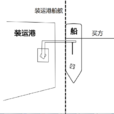Johnson-Cook 材料模型及失效模型。该模型一般用于描述大应变(large strains)、高应变率(high strain rates)、高温(high temperatures)环境下金属材料的强度极限以及失效过程。在Johnson-Cook强度模型中,屈服应力(yield stress)由应变、应变率以及温度决定。
JC模型的公式是基于实验得到的。JC模型中,流动应力(flow stress)或屈服应力可以表示为以下形式:
Y = [A + Bε^n][1 + Clnε*][1 - T*^m]
基本介绍
- 中文名:Johnson Cook模型
- 外文名:Johnson-Cook strength
- 假设材料:各向同性材料
- 来源:实验
- 性质:模型
材料模型
JC模型的公式是基于实验得到的。JC模型中,流动应力(flow stress)可以表示为以下形式
Y = [A + Bε^n][1 + Clnε*][1 - T*^m] (1)
式中
Y - effectiveyield stress
ε - effective plastic strain
ε* - normalized effective plastic strain rate (typically normalized to a strain rate of 1.0 s-1)
T* -homologous temperature (单位:K)。其计算表达式为:
T*= (T - T_room)/(T_melt - T_room) (2)
其中,T_room为室温;
T_melt为melting temperature。
A, B, C,n, m -Johnson-Cook模型五大材料物理特性常数,是定义Johnson-Cook模型的必要常数。其中,
A -Initial Yield Stress(单位:Pa);
B-Hardening Constant(单位:Pa);
C-Strain Rate Constant(无单位);
n -Hardening Exponent(无单位);
m-Thermal Softening Exponent(无单位)。
失效模型
由此材料的强度是应变、应变率和温度的函式。JC模型假设材料为各向同性材料。方程(1)中的 A, B, C, n 和 m 来自实验数据,对于大变形问题,可以假设在变形过程中,塑性功的任意百分比在变形材料中产生热量。对于许多材料,90-100%的塑性功作为热量在材料中散失。因此,方程(1)中使用的温度可以根据下面的表达式从温度上升中导出:
ΔT =[α∫σ(ε) dε]/ρc (3)
式中
ΔT - temperature increase
α - percentage of plastic work transformed to heat
c - heat capacity
ρ - density
JC材料模型的断裂由下面的累积损坏法则导出
D = Σ (Δε/εf) (4)
式中
εf = [D1 + D2exp(D3σ*)][1+D4lnε*][1+D5T*] (5)
Δε - increment of effective plastic strain during an increment in loading
σ* - mean stress normalized by the effective stress
D1, D2, D3, D4, D5 - constants
当D = 1时发生失效。失效应变εf和损伤的累积,是平均应力、应变率和温度的函式。
材料 Ti-6Al-4V Titanium
A: 1098 MPa (159.246 ksi)
B: 1092 MPa (158.376 ksi)
n: 0.93
C:0.014
m:1.1
D1:-0.090
D2:0.270
D3:0.480
D4:0.014
D5:3.870
材料 2024-T3 Aluminum
A:369 MPa (53.517 ksi)
B:684 MPa (99.202 ksi)
n:0.73
C:0.0083
m:1.7
D1:0.112
D2:0.123
D3:1.500
D4:0.007
D5:0.0
数据来源:
[1] D. R. Leseur. Experimental investigations of material models for Ti-6Al-4V titanium and 2024-T3 aluminum. Tech. Rep. DOT/FAA/AR-00/25. US department of Transportation. Federal Aviation Administration. September, 2000.
[2] G. Kay. Failure modeling of titanium 6Al-4V and aluminum 2024-T3 with the Johnson-Cook material model. Tech. Rep. DOT/FAA/AR-03/57. US department of Transportation, Federal Aviation Administration, September, 2003.



